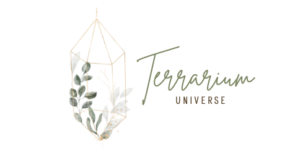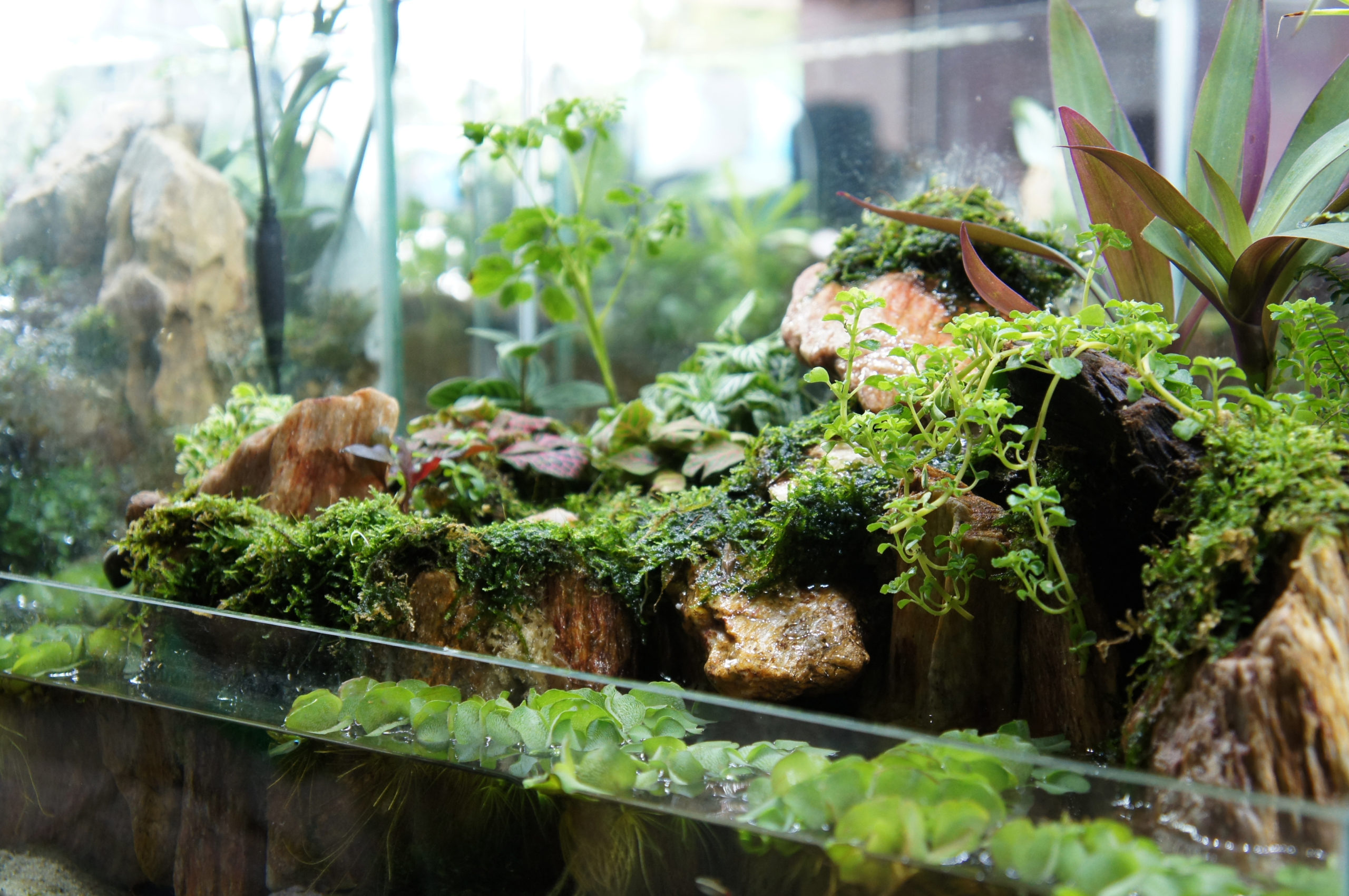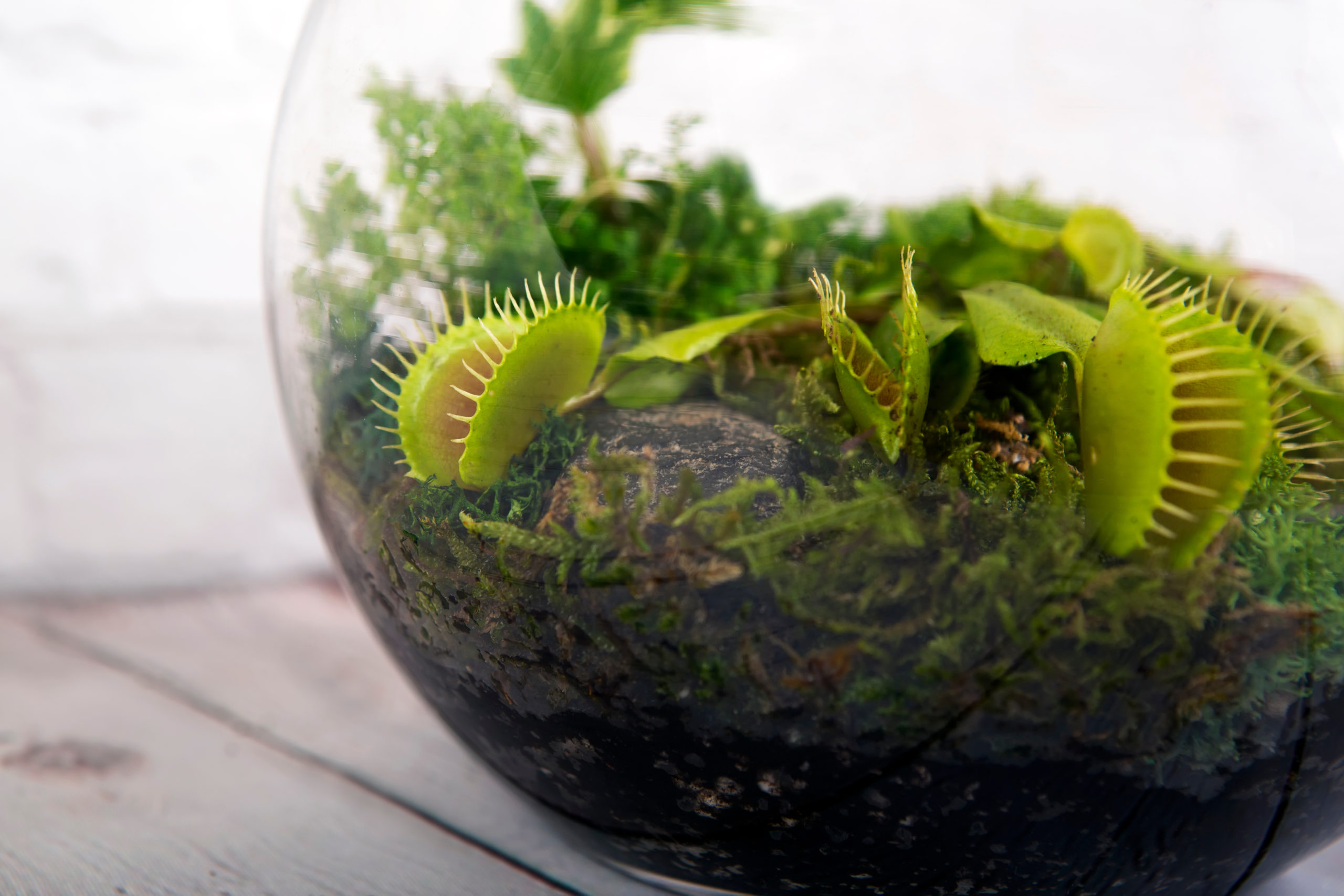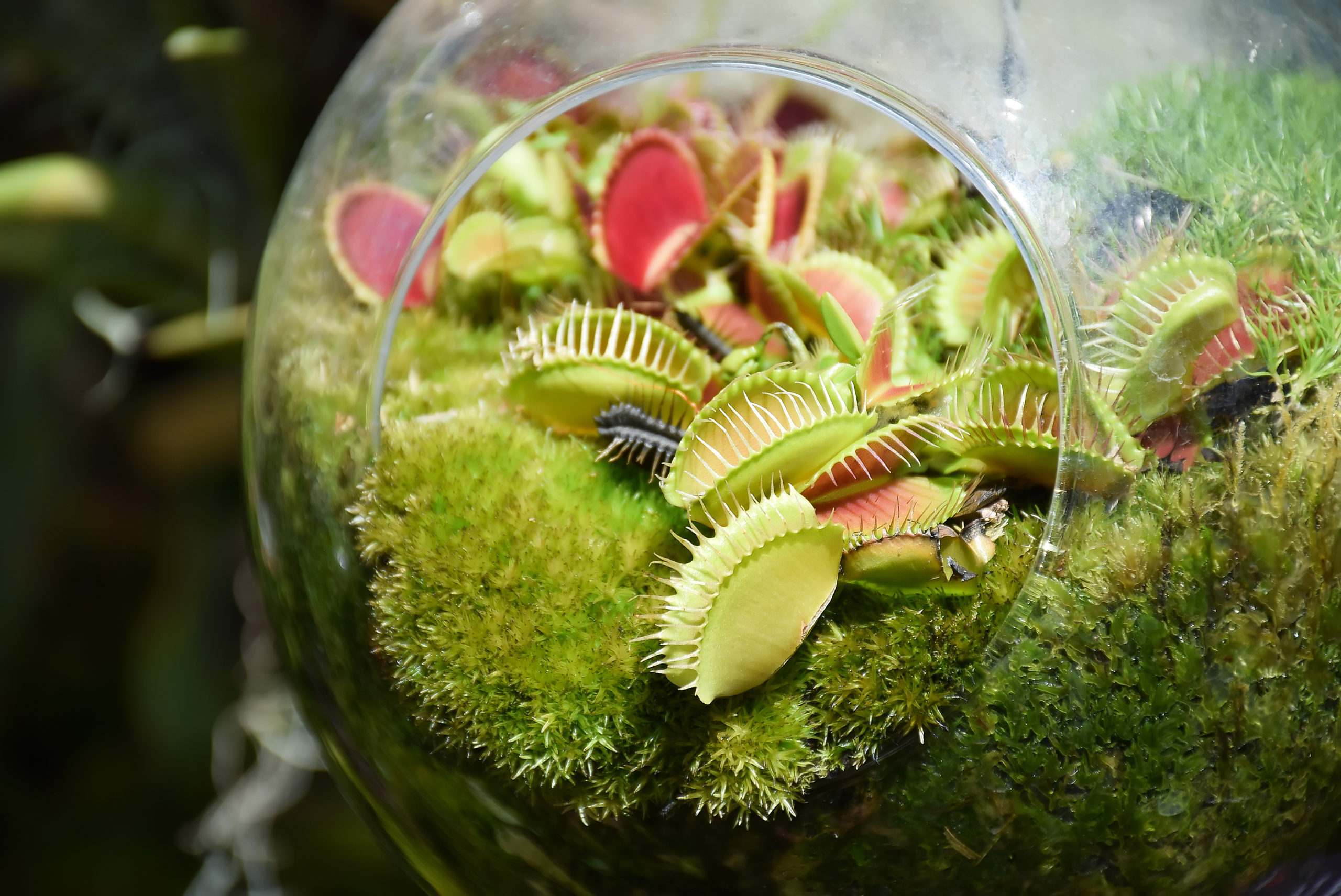Discover the World of Terrariums: A Beginner’s Guide to These Different Types of Terrarium
As an avid gardener with limited outdoor space, I became completely enchanted when I discovered terrariums – miniature indoor gardens housed in glass containers. These self-contained little ecosystems have so much to offer! Terrariums are low maintenance, unique decor items that add natural beauty to any home. There are endless creative possibilities too. Once you dive into the world of terrarium gardening, you’ll quickly get hooked like I did!
What Exactly Are Terrariums?
Simply put, a terrarium is any transparent, sealable container holding plants and soil. They come in all shapes and sizes – hanging globes, tabletop jars, glass boxes perched on plant stands. Terrariums are miniature gardens right inside your home! The transparency allows sunlight to filter through, while the enclosure creates a little greenhouse effect supporting plant growth. It’s a completely self-sustaining ecosystem.
The Benefits of Terrarium Gardening
I’ve completely transformed nearly every sunny windowsill in my home into a lush terrarium display. Why do I love them so much? Here are some of the best benefits terrariums offer:
Decoration – Terrariums add incredible visual interest to any space. The greens, textures, and pops of color from foliage and flowers make them far more than a simple houseplant. They become living works of art!
Low Maintenance – Once set up properly with soil, drainage, and plants suited to the enclosure style, terrariums are quite low maintenance. The water cycle happens naturally so minimal watering is needed. Pruning overgrowth keeps things tidy for months.
Relaxation – There’s something so soothing about gazing into your own flourishing, miniature world. Terrariums create a peaceful nature scene indoors. Caring for them is a calming, rewarding hobby.
Gifting – From whimsical hanging orbs to sleek geometric cloches, terrariums make fantastic gifts! Personalize them with a mix of plants matching the recipient’s style.
With all these benefits, it’s easy to see the appeal of terrarium gardening. Now let’s explore the main terrarium types so you can choose your favorites.
The Two Main Types of Terrarium: Open Terrariums and Closed Terrariums
While creativity knows no bounds in the world of terrariums, most gardens fall into one of two categories – open or closed systems. This refers to whether there is a sealable lid trapping humidity inside. Each style supports different types of plants, so choosing open or closed is an important first decision!
1. Closed Tropical Terrariums
Fully enclosed in glass with a tight-fitting lid, these high humidity terrariums house a flourishing jungle of tropical plants. Condensation consistently beads on the interior walls and foliage. The water cycle happens naturally through this trapped moisture, keeping plants hydrated with minimal watering needed. Mosses, ferns, creeping vines, tropical orchids, and shade-loving plants thrive in closed terrariums.
However, poor air circulation can lead to mold taking over the little garden. Make sure to prune any dying foliage immediately. I keep my closed terrariums elevated for airflow rather than sitting directly on surfaces. While a bit more specialized in care requirements, closed tropical terrariums offer a lush rainforest scene right in your living room!
2. Open Cacti & Succulent Terrariums
Open terrariums have no lid allowing much more air circulation. This low humidity environment is better suited for arid-adapted plants like succulents and cacti that need drainage. The soil dries out faster so they require more frequent watering than closed systems. However, with a bright sunny spot they make absolutely stunning terrariums displaying colorful rosettes, unique shapes, and gorgeous blooms!
I keep my open succulent displays on plant stands near windows where they flourish with minimal care. Just be sure to use a cacti/succulent soil mix and add drainage layers of gravel and charcoal for healthy roots. Then sit back and enjoy these desert beauties!
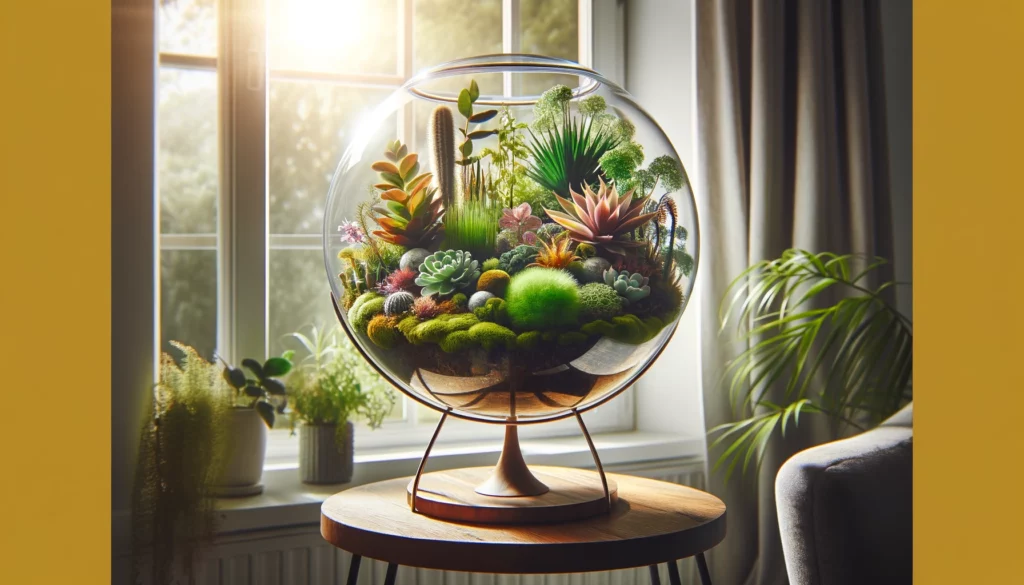
More Unique Terrarium Types to Explore
While most terrariums fall into open or closed categories, there are endless creative variations out there! Once you master the two main setups, have fun exploring more advanced gardens:
1. Landscape Terrariums
Move beyond just plants by incorporating miniature hardscapes! Add sand, small pebbles, rocks, driftwood, shells, figurines, tiny buildings – anything that sparks your imagination. I create desert landscapes, Japanese zen gardens, fairy villages and more inside my terrariums!
2. Bioactive Terrariums
Take your closed ecosystem to the next level by adding live microfauna. Springtails, isopods, and beetles help break down waste keeping plants thriving. Some even add tiny shrimp or frogs! Bioactive terrariums require balancing species and nutrients for all inhabitants, but create a fascinating world to observe.
3. Aquatic Terrariums
Yes, miniature aquatic ecosystems are possible! Use layers of gravel with water plants, snails, and even small fish or shrimp. Walstad method bowls use soil capped by sand to grow vibrant underwater gardens. Consider whether you want moving water features too. The options with aquatic terrariums are endless!
4. Paludariums
The best of both worlds! Paludariums contain terrestrial and aquatic areas within the same enclosed system. I create rainforest overhangs emerging from ponds or use driftwood to transition from water to land. This allows you to mix moisture-loving plants, amphibians, fish and more.
The creativity possibilities are infinite when designing your own custom terrarium worlds! Now let’s get into the fun part – choosing plants.
Selecting the Best Plants for Your Terrarium
With endless plant varieties to pick from, a key factor in a thriving terrarium is choosing species well-suited to the enclosure style. Consider attributes like humidity needs, growth rate, sunlight requirements and size. You want a balanced ecosystem that can flourish together long-term. Here are some of my favorite terrarium plant picks:
Closed Terrarium Plants
-
- Tropical mosses – Grow lush carpets of green and add striking height with tree-like species.
-
- Nerve plants – Gorgeous wide, floppy leaves in shades of red, green and bronze.
-
- Creeping figs – Lush vines that climb terrarium walls with ease. Guide onto driftwood or rocks too.
-
- Bromeliads – Vibrant tropical epiphytes, some with long-lasting flower spikes. Use for height.
-
- Peacock and rabbit’s foot ferns – Stunning ferns with interesting fronds.
-
- Orchids – Miniature orchids add gorgeous blooms. Ensure high humidity.
Open Terrarium Plants
-
- Echeveria – Hundreds of varieties with colorful rosettes of thick foliage.
-
- Burro’s tail – Trailing stems with plump overlapping gray-blue leaves.
-
- Hens-and-chicks – Evergreen perennials form charming clumps. Fun to split over time.
-
- Ponytail palm – Quirky little palm with swollen base and long green leaves.
-
- Air plants – Unique epiphytes, many with stunning bloom spikes. Mount onto wood or rocks.
Have fun mixing heights, colors and textures for visual interest. Just stick with plants suited for the humidity levels within your open or closed terrarium system.
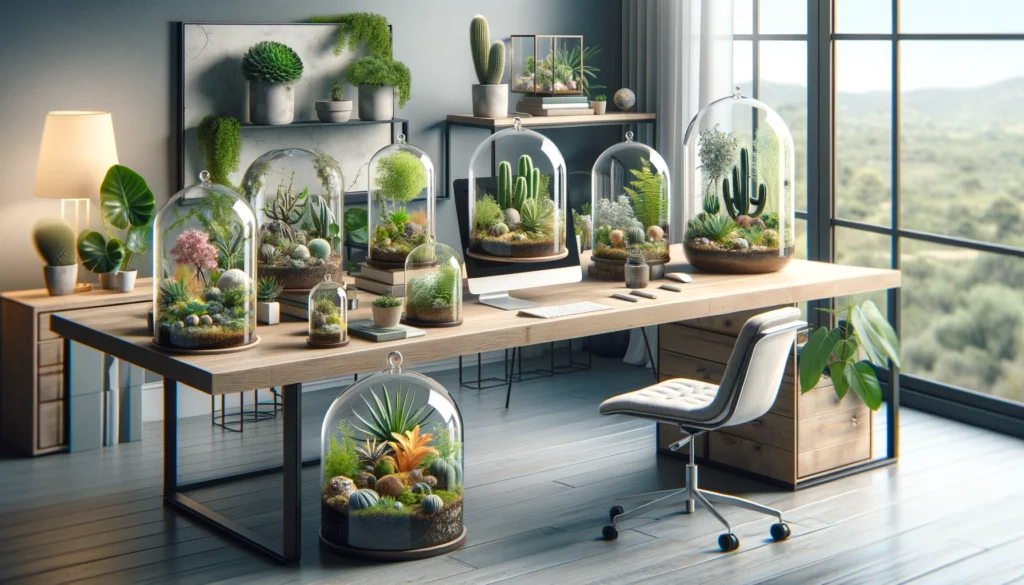
Successful Terrariums Setup
While terrariums contain their own balanced ecosystems, you still need to set up the foundation to help your plants thrive long-term. Follow these tips when creating your mini indoor gardens:
Choose Glass Containers – Clear glass allows light to filter through from all directions as the enclosure sides magnify sunlight. Glass also helps retain humidity in closed systems. Look for unusual shaped jars, hanging globes, geometric cloches and more!
Add Drainage Layers – Start with a layer of pebbles or LECA clay pebbles for drainage and airflow around roots. Top this with activated charcoal to filter impurities while inhibiting mold and bacteria.
Use Specific Soil – Potting mixes designed for terrariums or cacti provide the aeration and drainage succulents need. Closed tropical systems need water-retentive mix containing peat or coco coir.
Include Hardscape – Get creative with sand, small stones, shells, mini buildings, figurines, plastic plants, and found items that spark imagination. Driftwood, rocks or cork add height for plants.
Situate Properly – Terrariums need bright, indirect light to thrive. Situate near sunny windows but avoid direct hot sunlight which can cook plants inside. Elevate closed terrariums for vital airflow.
Taking the time to set up the “bones” of your terrarium with drainage, soil and creative touches builds a foundation for lush plant growth for years to come!
Terrarium Care for Your Miniature Garden
Once built and planted, terrariums are quite low maintenance thanks to their self-contained ecosystems. However, some basic care is vital:
-
- Water when needed – Closed systems only need occasional misting. Open gardens need more frequent soil watering. Learn your plants’ needs.
-
- Prune overgrowth – Trim back foliage blocking light or overtaking other plants. Remove dying leaves immediately to prevent mold.
-
- Clean walls – Wipe excess water buildup and algae from glass walls with paper towel to allow light through.
-
- Watch conditions – Monitor for condensation, signs of mold, insect invaders, and other issues needing correction.
-
- Enjoy observing – Relax and indulge in the calming sanctuary your terrarium garden provides!
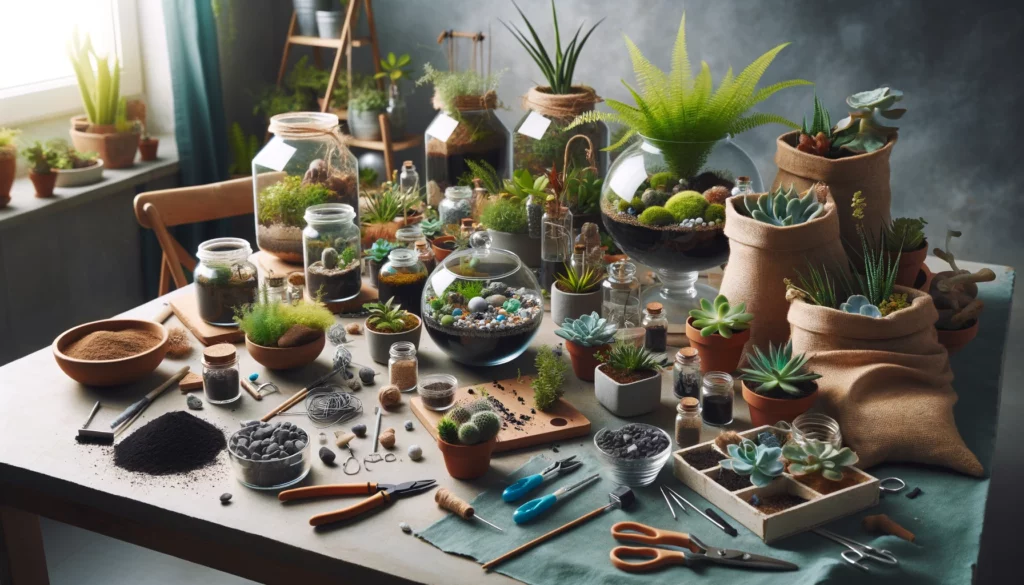
Dive Into This Rewarding Hobby
I hope this beginner’s guide has inspired you to consider bringing a little nature indoors with these living artworks! Terrariums offer endless creative possibilities paired with minimal care requirements once set up. They provide a sanctuary of green in any space while purifying the air. There’s so much to explore within the world of terrarium gardening. I invite you to join me in this incredibly fun, relaxing hobby – your first gorgeous garden is only a glass container away!
Types of Terrarium
DIY Closed Terrarium Guide: Create Your Mini Ecosystem
Crafting a Sealed Ecosystem: The Art of DIY Closed Terrariums in Jars I don't know about you, but I've always...
Read moreHow To Make an Open Terrarium: Guide and Care Tips!
How to Make an Open Terrarium Plants with Succulents and Other Best Plants Terrariums have become increasingly popular over the...
Read more